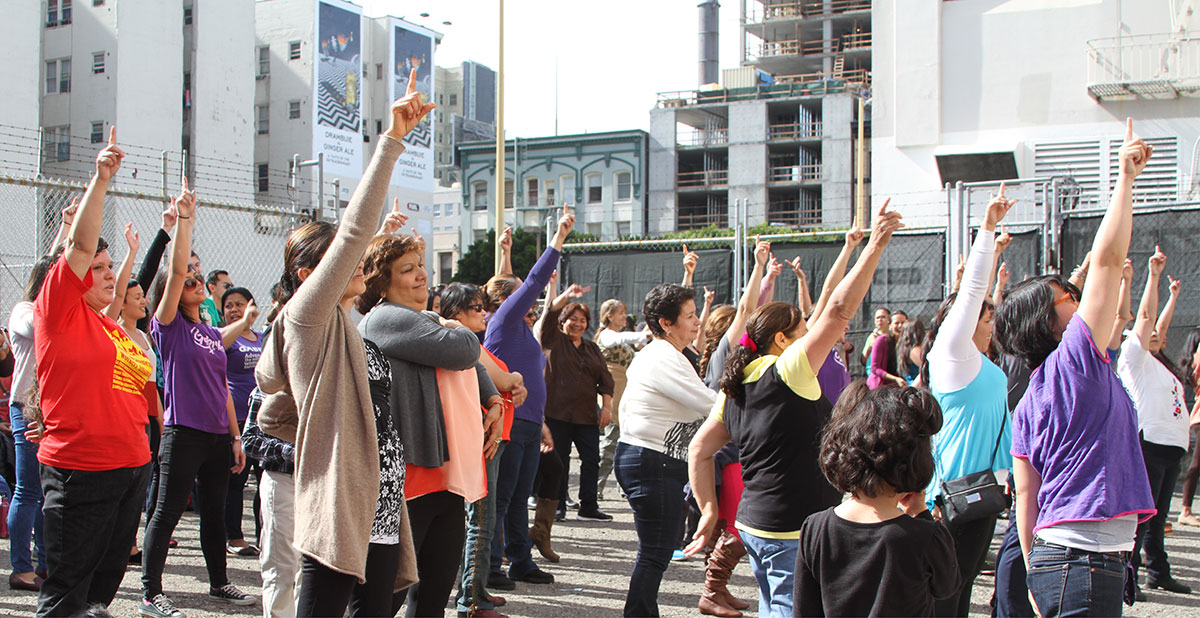
Carehaus: Designing for Care, Building Community
March 17, 2020 — The Big Picture
Caregivers play critical frontline roles in regular illnesses and especially in the Covid-19 pandemic. In the pandemic’s early stages, when our children have the flu or a bad cold, care-workers filled in so that we could continue to go to work. Throughout the pandemic, caregivers for the elderly and those with reduced mobility function as lifelines, ensuring they have supplies, medicine, meals, and social support.
At the same time, care-workers put themselves at risk of catching or spreading the virus to their communities. According to the National Domestic Workers Alliance (NDWA), in the United States, caregivers make a median wage of $10 an hour, working under the poverty line and without sick leave. One fifth report that in the past month, there was no food to eat in their own home because they were unable to obtain it. Coupled with the threat of an economic recession, caregivers feel pressured to take the work while they can in order to feed their families.
Caregivers, largely composed of immigrant women, are thus bearing the brunt of America’s already fractured public health policy and weak workforce protection — and this impacts us all. Because if we fail to care for our caregivers, we in turn impact the health and resiliency of our community as a whole.
What would it look like instead to value care as a community investment? What if we recognized careworkers as an important indicator of a community’s health, happiness, and resiliency?
With Ai-jen Poo, co-founder of Caring Across Generations, and NDWA worker-leaders, we’re exploring one challenge faced by both caregivers and care-receivers alike — housing precarity. Currently, caregivers report that about 60% of their income goes towards paying rent. At the same time, elders needing care are faced with very limited and often insufficient options. Among fast-growing (gentrifying) cities, the elderly are among the first to be displaced. Finding affordable rentals is a challenge. If and when they do, the elderly often face discrimination when applying for a lease. For those who need care, assisted living facilities average $4000 a month and are out of reach for 90% of Americans. Those with means who want to age in place have a hard time finding care — there simply are not enough hands to go around.
We’re envisioning a new kind of “care-based co-housing” that balances the needs and desires of both caregivers and care-receivers, reduces social isolation, and dignifies care and aging. In these “Carehauses,” caregivers would live in ‘clusters’ of 4-8 units above or aside the elderly. Communal spaces provide spaces to share meals, past times, relaxation, and more. The children and families of caregivers can socialize with elders which in turn reduces the cost of childcare. Communal amenities — a fully equipped kitchen, cleaning appliances, medical aid accessories, storage space, air conditioning — means the group benefits from shared expenses to reduce initial capital expenses and energy consumption. If America’s eldery are the greatest energy consumers, largely due to an increased reliance on air conditioning under rising temperatures, Carehauses can also help reduce our overall footprint.
Individual living spaces means that care-receivers can enjoy their own home, customize it to their needs, and strengthen traditions and cultures with each other. Providing or receiving care is, at the same time, proximate. For example, help with lifting a client reduces back strain, a common workplace injury that affects nearly 30% of workers each year. Taking turns keeping an eye on those that need close monitoring, such as patients with Alzheimers or dementia, makes caregiving more efficient.
We’re creating new architectural typologies that operate on a neighborhood scale. Building on the housing-first approaches of cities such as Houston, Salt Lake City, and Seattle to tackle other social challenges. We’re examining what these collective housing models — or Urban Carehauses — might look like in a highrise building, medium dense inner city suburb, or low-rise suburban environment. Each of these models position the home as a network of socio-economic dependencies, mutual aid, and source of solidarity.
For Carehauses to flourish and proliferate, what support from policy makers, planning departments, developers, and insurance companies are needed to establish these housing models?How can digital platforms augment the physical networks and promote the creation of these communities? When caregivers bring up their own families among a community of elders, how does intergenerational care strengthen the tie between individual health and community resiliency? And as an artist and architect, we ask how can we design physical spaces for these relationships?
Learn more about the Carehauses and other “Open Collectives” in the Arsenale of the 17th Venice Biennale of Architecture (Aug 29 – Nov 29, 2020). Open Collectives is an immersive installation featuring video, printed materials and an interactive platform that feature architectural and urban projects for emerging collectives. Initiated by MIT’s Future Urban Collectives Lab (FUC) founded and directed by architect Rafi Segal in collaboration with MIT Civic Data Design Lab director Sarah Williams, artist Marisa Morán Jahn, and futurist Greg Lindsay, Open Collectives asks how new communities can be formed, organized and strengthened through both the digital and urban.
*Carehaus formerly referred to as CarePod.
Updated September 28, 2020.
Featured photo: Members of the California Coalition of Domestic Workers and Studio REV- celebrate the first year anniversary of the state’s Domestic Worker Bill of Rights. Photo by Rebeka Rodriguez, 2016.